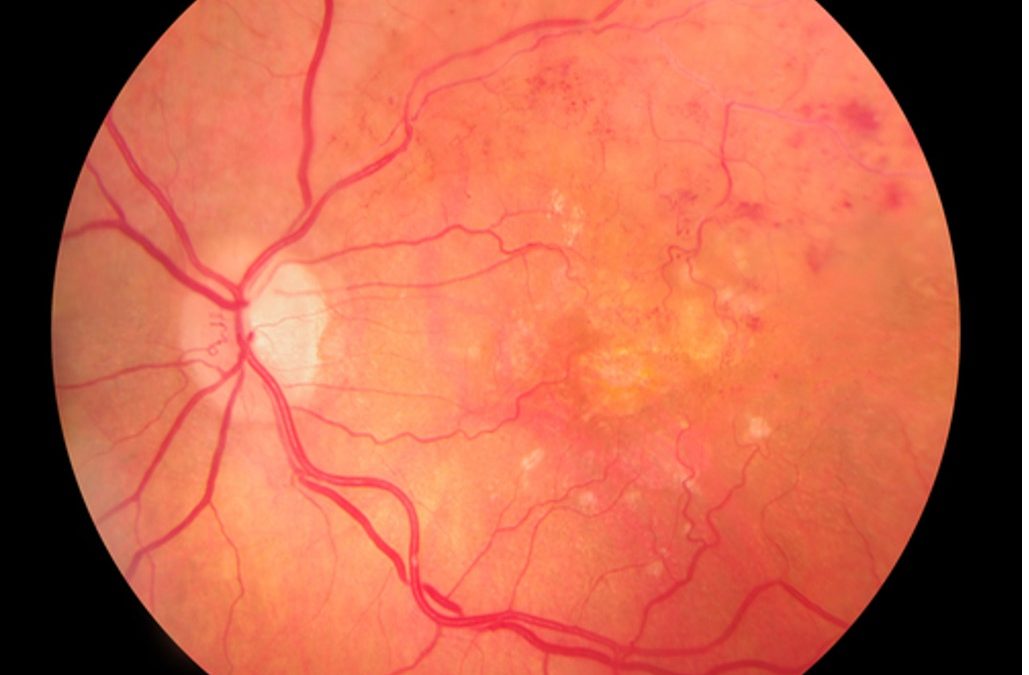Background
The retina is the inner layer of the eye that helps us see. The retina contains many blood vessels called retinal arteries and retinal veins; arteries supply oxygen to the retina and veins drain blood and waste products out of the retina. They are both very important in keeping the retina healthy and maintaining good vision.
What is a retinal vein occlusion?
A retinal vein occlusion is a blockage in a retinal vein. This blockage means blood cannot be drained from the retina properly and this causes bleeding and swelling in the retina and other potentially serious problems in the eye.
What are the different types?
There are two types of retinal vein occlusion: a central retinal vein occlusion and a branch retinal vein occlusion.
Central retinal vein occlusion: there is a blockage in the main retinal vein, affecting the entire retina.
Branch retinal vein occlusion: there is a blockage in a smaller branch of the central retinal vein, affecting a smaller section of the retina and therefore not affecting your vision as badly.
What causes a retinal vein occlusion?
There is no single cause for a retinal vein occlusion but many factors have been known to increase your risk of developing one.
The most common risk factors include those where your blood vessels are affected, such as: high blood pressure, high cholesterol, diabetes and smoking. Other conditions that can also increase the risk include glaucoma or some blood disorders.
In some cases, however, no clear cause is found.
What are the effects of a retinal vein occlusion?
A retinal vein occlusion can affect patients in different ways: in some cases, the retinal vein occlusion is not noticeable and causes no problems. However, it is possible to develop serious complications because of a retinal vein occlusion so your doctor will need to monitor you closely for these.
Complications relating to a retinal vein occlusion include:
Macular oedema – a blockage in the vein can cause fluid leakage in the central part of the retina (the macula). This leakage can cause swelling (oedema) and reduced, blurry or distorted vision.
New vessel growth – as a response to blockage, the eye starts to release factors that cause abnormal blood vessels to grow in the eye. These blood vessels are weak and leak or bleed very easily, causing problems such as raised pressure in the eye.
Generally, a central retinal vein occlusion is more serious and has a higher chance of affecting your vision and causing these complications.
How is a retinal vein occlusion treated?
After confirming you have had a retinal vein occlusion, we will ask your GP to assess you for some of the risk factors mentioned above. It is very important to address these to reduce the risk of further problems.
If there are no complications relating to your retinal vein occlusion then you do not need any treatment, but you will still need to be monitored closely by your doctor.
Complications require further specialist treatment and closer monitoring. Macular oedema is usually managed with eye injections. There are different types of injections that may be used but they all aim to reduce the swelling in the retina.
If your doctor finds new vessel growth because of the retinal vein occlusion, you may need laser treatment. The laser treatment aims at preventing the condition from getting worse, but will not improve your vision.
Your consultant will help guide your management plan and keep you under close monitoring.
Resources
What do I do if I think I have Retinal Vein Occlusion?
If you are concerned that you may have Retinal Vein Occlusion or would like more information do get in touch via the contact page.
